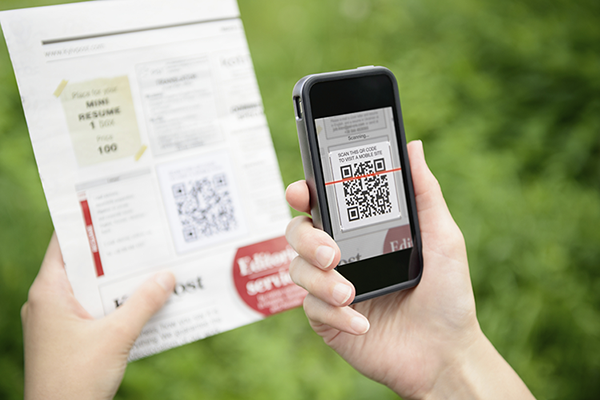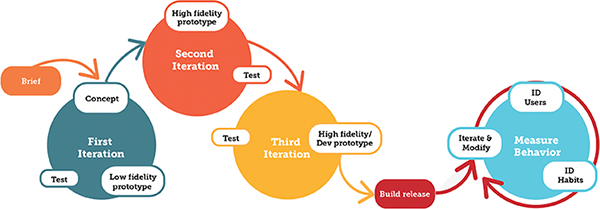- What makes a habit?
- How do you measure a habit?
- Evolution, Not Revolution
- Observe the Early Adopters of Your Product
- What does a habitual user look like?
- Model Your Top Users’ Habits
- UX Is Critical to Habit Measurement
- Modify Based on What You Learn
- Frequently Asked Questions on User Experience and Changing Behavior
Understanding your customers and their habits is critical to creating compelling positive user experiences. Here, author Jodie Moule shares an excerpt from her new SitePoint book Killer UX Design, which explores:
- What makes a habit
- How do you measure a habit
- What does a habitual user (of your product/website/service) look like?
What makes a habit?
When you think about some of the great technology solutions of the last 20 years, many share a common ground: they create a habit. When technology has created a habit in people, a person’s use of a product is automatic, without thought. Technologies with a social aspect are clear winners in the habit-formation stakes. Facebook, Pinterest, and Twitter all have users coming back to their sites several times a day to check what has been said, posted, or liked about content—sometimes even several times within an hour. The additional game-changer in habit formation has been the explosion of mobile devices. Even traditionally non-habit forming sites that are more transactional in nature have the ability to become habit-forming when made available on a mobile phone (for example, mobile banking). Consider how smartphones have changed how we interact with business. Products used daily create a barrier to entry for competitors in their market. If your users are unable to imagine life without your product, you can safely say you’ve met your goal. So what makes a habit?
The more you do something without making a conscious decision, the stronger the habit. Frequency of use leads to the creation of a habit in your users; so if your users are coming back regularly, it’s likely that habits are forming.
Products used daily create a barrier to entry for competitors in their market. If your users are unable to imagine life without your product, you can safely say you’ve met your goal. So what makes a habit?
The more you do something without making a conscious decision, the stronger the habit. Frequency of use leads to the creation of a habit in your users; so if your users are coming back regularly, it’s likely that habits are forming.
How do you measure a habit?
Measuring the effectiveness of your design in creating habits can be broken down into those tasks you perform before you launch, and those that you do after.Before You Launch Your Product
Define a habitual user How often do they use the site? What do they do? How long do they stay? How often do they visit? These questions will help you to outline what you are expecting up front before you launch. This is easier to do if your product already exists, but try to estimate what you’d expect or hope for, at a minimum. Define the frequency of use How many times a day, week, or month do you see as realistic usage? Set a clear expectation for overall frequency of use of your product, but try to be realistic. Everyone wants users to engage daily, or even hourly—but few products manage this. The context of your product will help guide what you can sensibly expect. Use the product yourself Keep note of how often you use your own product. Average out your ideal-use scenario with the number of times you have used it; adjust expectations from there. Focus on behavior Remember, we are focused on users’ behavior, and what creates a habit varies for the type of service you deliver. Focus on individual users and what they are doing, and assess if they’re making your product a habit or not. The overall active user rate is not predictive; it is what they are actually doing that should be the focal point.After You Launch Your Product
Set the baseline Once launched, you are in a position to collect and analyze data around habits. Measure at intervals how many of your users actually fit the definitions you set at baseline, and then at different time periods post-launch (monthly, quarterly, six-monthly). Who is dropping off and why Understand who engages with your product and who dumps it. Try to uncover why that might be the case using UX methods. Crunch your numbers Watch as user data and patterns emerge and then see how many of your users actually meet the expectations you originally set. If no one is using the product in the way you expected, then decide from your audience pool what they are doing and monitor as behavior changes or adjusts over time (a few examples of monitoring tools to consider include Flurry, Localytics, Google Analytics, ClickTales, and so on). Be patient! Measuring behavior is a job done longitudinally and there is no way of hastening time. The best results are taken over a long period, and during this time anything could change—so hang in there. There are also slow starts. There is no magic percentage you can assign to assess whether your product is creating a habit. Actual user behavior patterns are most predictive of an eventual habit. Monitor your users’ movements through the product, engage with them (for example, through interviews and evaluations), and continue to watch and learn.Evolution, Not Revolution
Iteration as an approach to learning continues even after you’ve launched, and is backed (or refuted) by larger volumes of customer data that reflect actual use of your product. You need to take these learnings and continue to evolve your design, but keep in mind that it is about evolution rather than revolution at this stage of the game. You are not looking to fundamentally change your design approach, but rather to tweak and refine based on a new level of understanding of your customers’ needs and habits.
Observe the Early Adopters of Your Product
Watching the early adoption of your product will allow you to ascertain where the real value of your product lies for your users, helping you to then shape the product in new or unexpected ways. A great TED talk with Evan Williams, the co-founder of Twitter, reveals how watching early adopters of the product helped to uncover hidden value that was not imagined in its creation. In this talk, Evan discusses how Twitter was originally created as a broadcast medium. Users shaped its evolution by inventing ways of doing things; for example, using the @ handle evolved from users shouting out to other users they knew whom they wanted to draw into their discussions; it was not part of the original design. Similarly, the use of the hashtag [#] to search for like items was not originally designed, but created by a third-party provider as a way to locate content as the service grew and evolved. Twitter then purchased this service, and the hashtag became an invaluable way of locating content across all posts.What does a habitual user look like?
Once you’ve launched, identify the behaviors that differentiate your habitual users from the rest, and try to identify the tipping point that took them from normal user status to habitual user status. It will take more than stats to uncover the answer, and this is where follow-up contact with your users will be useful to uncovering the “why.” Before you go see users in the wild, check your data and formulate a hypothesis about their usage and why they might have taken a certain pathway that other users have not.Model Your Top Users’ Habits
Target your devoted users and try to understand their usage and behavior in detail so that you can apply learnings from this group to the rest of your user group. Understand what it was that hooked them more strongly than standard users so that you can then use this information to attract a new group or convert others. You could focus on data and drill down to see what they did and where they went within your product, uncovering the patterns and areas that drove their usage. Alternatively, pull out your UX methods again and talk to your most passionate users about how they use the product; monitor them in their own context and ask them to keep a diary through the trial so that you can uncover greater detail than stats alone can give you. Your devotees will love it! Identify from your data commonalities among the habitual users to see if there is a pattern that led to a habit that can be translated across a wider group.UX Is Critical to Habit Measurement
Usage statistics are invaluable as a first step as they give you a high-level idea of how people are using your product; however, users can be interrupted in different ways, and what you see in the data might not be the result of the design. Instead, it may reflect a certain situation or circumstance. Like everything, data needs intelligent interpretation. In many ways, we come full circle in our UX process. To uncover habitual behavior, use benchmark testing, contextual interviews, and diary studies. In your diary studies, you can leave a select group of users with your product and monitor usage over an extended period of time—say, two weeks to two months—and ask them to record instances of use and general notes about the product. UX helps you to see what is most valuable and habit-forming about your product, so that you can create something that really resonates and makes a difference to your users and the wider product landscape.Modify Based on What You Learn
What you learn post-launch will allow you to focus on aspects to further develop and refine your product. You’ll also be able to market your product to new users in a way that directs them towards the end you seek. To reach a deeper level of understanding, head out of the office and start talking to the real users of your product once again. This should help you to add context to the analytical data you’ve collected. Key areas for expanding your learning at this stage are:- What are hurdles to engagement with the product or features, if any?
- What gaps do competitor’s products fill that yours don’t?
- Is the problem your product solves one that customers want solved?
- Are your strategies influencing users’ behavior towards the desired result?
- Which aspects of the product resonate with users, and which do not? (In this sense, you understand the aspects of the original vision that have been validated, and those areas that are not resonating.)
Frequently Asked Questions on User Experience and Changing Behavior
What are the key factors that influence user habits in UX design?
User habits in UX design are influenced by several factors. Firstly, the simplicity of the design plays a crucial role. Users are more likely to form habits around simple, easy-to-use interfaces. Secondly, the frequency of use also impacts habit formation. The more frequently a user interacts with a design, the more likely they are to form a habit. Lastly, positive reinforcement and rewards can encourage users to repeat certain behaviors, thereby forming habits.
How can UX design help in changing user behavior?
UX design can play a significant role in changing user behavior. By understanding the user’s needs and preferences, designers can create interfaces that encourage desired behaviors. This can be achieved through various methods such as providing clear, concise instructions, using persuasive design techniques, and offering rewards for desired actions.
What is the role of user research in understanding user habits?
User research is crucial in understanding user habits. It provides insights into how users interact with a product or service, their preferences, and their pain points. These insights can then be used to design interfaces that align with user habits and encourage desired behaviors.
How can habit-forming UX design benefit businesses?
Habit-forming UX design can significantly benefit businesses. When users form habits around a product or service, they are more likely to become loyal customers. This can lead to increased customer retention, higher engagement rates, and ultimately, increased revenue.
What are some common mistakes in UX design that hinder habit formation?
Some common mistakes in UX design that hinder habit formation include overcomplicating the design, not considering the user’s needs and preferences, and failing to provide clear, concise instructions. These mistakes can make it difficult for users to interact with the product or service, thereby preventing habit formation.
How can UX designers encourage positive user habits?
UX designers can encourage positive user habits by creating simple, easy-to-use interfaces, providing clear, concise instructions, and offering rewards for desired actions. Additionally, user feedback should be regularly sought and incorporated into the design to ensure it aligns with user needs and preferences.
What is the role of feedback in changing user behavior?
Feedback plays a crucial role in changing user behavior. It provides users with a sense of progress and accomplishment, which can motivate them to continue engaging with the product or service. Additionally, feedback can help identify areas of improvement in the design, which can then be addressed to encourage desired behaviors.
How can UX design influence user engagement?
UX design can significantly influence user engagement. A well-designed interface that aligns with user needs and preferences can encourage users to interact with the product or service more frequently. Additionally, positive reinforcement and rewards can motivate users to engage more deeply with the product or service.
What are some effective strategies for changing user behavior through UX design?
Some effective strategies for changing user behavior through UX design include understanding the user’s needs and preferences, creating simple, easy-to-use interfaces, providing clear, concise instructions, and offering rewards for desired actions. Additionally, regular user feedback should be sought and incorporated into the design.
How can UX design contribute to a better user experience?
UX design can contribute to a better user experience by creating interfaces that are easy to use, visually appealing, and align with user needs and preferences. Additionally, by understanding and catering to user habits, UX design can encourage desired behaviors and increase user satisfaction.
Kelly Steele is the English Editor for SitePoint.


